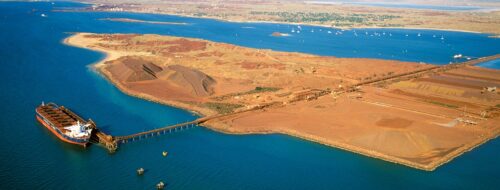
Report | 2024
Green Iron Corridors: Transforming the Steel Supply Chains for a Sustainable Future
To reduce emissions and meet increasing global demand, we must shift our approach to making steel. The steel sector currently produces 11% of global CO2 equivalent emissions, and demand is expected to increase between 12% and 36% by 2050. To meet new demand while reducing emissions, we must ramp up renewable hydrogen-based ironmaking this decade.
Historically, iron and steel have been produced in large integrated facilities co-located with access to cheap coal. With cost-competitive renewable hydrogen slated to play a significant role in the global energy transition beyond just steel, countries are establishing new green hydrogen import and export strategies. Greener production methods will be drawn to new geographies rich in renewable resources. Creating green iron corridors by splitting steel production processes up could prove a win-win: with ironmaking taking place in a location with abundant iron ore and accessible renewable energy and steelmaking occurring in regions with strong manufacturing capabilities and demand already in place. Where export and import regions overlap with existing iron ore trade flows, transporting green iron sees both cost and energy savings compared to transporting hydrogen and ore separately.
Green iron corridors can offer significant benefits along the supply chain including cost savings, increased efficiency, and economic opportunity for both importing and exporting countries. Restructuring half of primary steelmaking to use green iron could save > $25 billion annually across the 10 highest priority importers at today’s prices, which translates to a savings of $80-125 per ton of steel. Further, fast-tracking corridor opportunities between existing and emerging iron exporter regions to the EU and Asia could abate an annual ~30 million tons of CO2 by 2030.
This report, by RMI and the Green Hydrogen Catapult, establishes an assessment framework and outlines challenges, opportunities, and recommendations to help make green iron corridors a reality and decarbonize the steel sector this decade.
